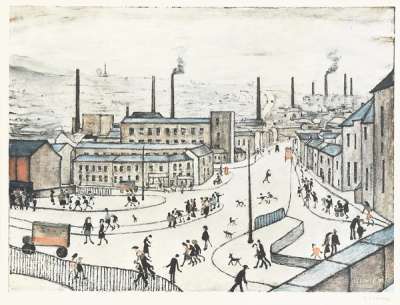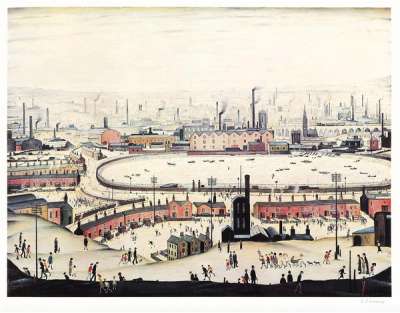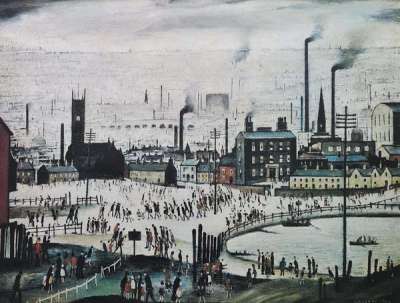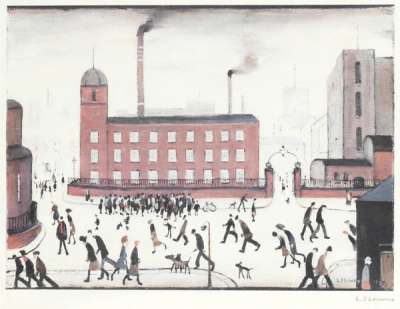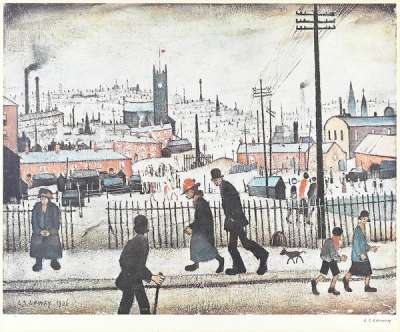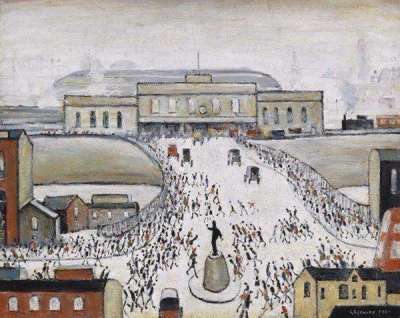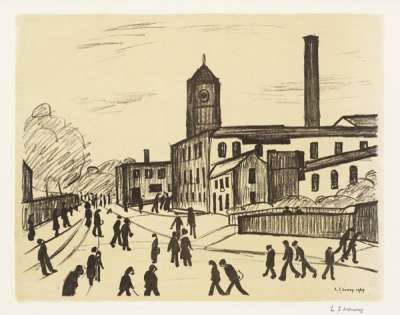Industrial
Scenes
Doubtless the subject matter for which he is best-known, beloved British artist L.S. Lowry’s Industrial Scenes have come to enjoy a central place in British national imagery. Through them, the artist shaped a collective understanding of Northern working-classes, imbuing them with immense dignity and humanity, in pre and Post-War Britain.
L S Lowry Industrial Scenes For sale
Industrial Scenes Value (5 Years)
With £150711 in the past 12 months, L S Lowry's Industrial Scenes series is one of the most actively traded in the market. Prices have varied significantly – from £200 to £35000 – driven by fluctuations in factors like condition, provenance, and market timing. Over the past 12 months, the average selling price was £3675, with an average annual growth rate of 1.5% across the series.
Industrial Scenes Market value
Auction Results
| Artwork | Auction Date | Auction House | Return to Seller | Hammer Price | Buyer Paid |
|---|---|---|---|---|---|
 Britain At Play L S Lowry Signed Print | 7 Oct 2025 | Sworders | £808 | £950 | £1,200 |
 View Of A Town L S Lowry Signed Print | 7 Oct 2025 | Sworders | £2,210 | £2,600 | £3,250 |
 Mill Scene L S Lowry Signed Print | 24 Sept 2025 | Anderson & Garland | £1,615 | £1,900 | £2,400 |
 The Pond L S Lowry Signed Print | 17 Sept 2025 | Rosebery's Fine Art Auctioneers | £3,400 | £4,000 | £5,000 |
 Station Approach L S Lowry Signed Print | 16 Sept 2025 | Gorringes | £850 | £1,000 | £1,250 |
 Going To The Match L S Lowry Signed Print | 11 Sept 2025 | David Lay | £24,650 | £29,000 | £35,000 |
 Industrial Panorama L S Lowry Signed Print | 9 Jul 2025 | Bonhams Knightsbridge | £2,380 | £2,800 | £3,600 |
 Huddersfield L S Lowry Signed Print | 10 Jun 2025 | Gorringes | £1,870 | £2,200 | £2,750 |
Sell Your Art
with Us
with Us
Join Our Network of Collectors. Buy, Sell and Track Demand
Meaning & Analysis
Perhaps the subject matter he is best known for, and for which he is most beloved, Lowry’s Industrial Scenes are among his most recognisable works. S. Lowry’s skilful depictions of industrial scenes have come to enjoy a central place in British national imagery, shaping and defining a collective understanding of pre and PostWar Britain, the North and its working-class community.
Though most of Lowry’s depictions are partially invented and partially locally and geographically specific, the artist’s representations of the “industrial scene”, as he called it, have assumed an historical relevance that cannot be understated. According to art historian T. J. Clark, Lowry’s repetitive and seemingly monotonous depictions work perfectly to represent the “immense social phenomenon” that was the reality and then slow dissolution of Britain’s working-class cities. For the scholar, Lowry’s paintings convey a social realism that universalises the British North to suggest a sense of commonality and shared social experience in relation to industrialism and the modern urban landscape.
Lowry’s fascination with industrial scenes resulted out of his upbringing, having lived most of his childhood in Stretford. To the artist’s admission, however, it was not until 1912 that he began to conceive of the North as a source of beauty, and thus an aesthetic matter. Admittedly, it was Stanely Houghtone’s Hinde Wakes that prompted Lowry to “see beauty in the smoke”, as Chris Water beautifully puts it. He thus embarked on a large project aimed at aestheticising and bringing on canvas the social reality of the North, which he regarded with affection and admiration. As Lowry recounts, "We went to Pendlebury in 1909 from a residential side of Manchester, and we didn't like it. My father wanted to go to get near a friend for business reasons. We lived next door, and at first, I disliked it, and then after about a year or so I got used to it, and then I got absorbed in it, then I got infatuated with it. Then I began to wonder if anyone had ever done it. Seriously, not one or two; and it seemed to me by that time that it was a very fine industrial subject matter. And I couldn't see anybody at that time who had done it – and nobody had done it, it seemed." It was this aestheticising outlook able to beautify the North that has in turn distinguished Lowry as one of the utmost British painters, with scholars of the calibre of John Berger claiming that Lowry was the first painter to dignify the grim coldness and drabness of industrial cities.
